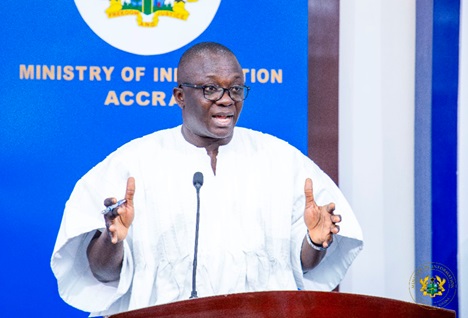
Govt, GIRSAL to provide GH¢166m interest-free loans to farmers
The government, in collaboration with the Agriculture Development Bank and the Ghana Incentive-Based Risk Sharing System for Agricultural Lending (GIRSAL), is working on a plan to provide GH¢166 million in interest-free loans to commercial farmers.
This initiative aims to restore the country’s food system and address the grain loss gap.
As part of the plan, the Ministry of Food and Agriculture has already secured and set aside GH¢ 50 million to cover the interest on these loans, making it more feasible for commercial farmers to access the needed funds.
The Minister of Food and Agriculture, Dr Bryan Acheampong, announced this at a press briefing in Accra yesterday.
The briefing was to update the nation on the dry spell, the food situation and announce the implementation of the measures to mitigate the effect on the farmers and the country’s food system.
Measures
Outlining the steps being taken by the government to mitigate the effects of the dry spell, he said, there was an ongoing distribution of 118,000 tonnes of fertiliser and 5,133 tonnes of seeds to 800,000 smallholder farmers across the nation.
![]()
Each farmer, he said, would receive two bags of NPK fertiliser, one bag of Urea, and seeds for either maize or rice.
He said commercial farmers would also benefit from 20,000 metric tonnes of fertiliser, with each receiving up to 50 bags of NPK and 25 bags of Urea.
Dr Acheampong said the input was expected to result in the production of 360,000 tonnes of paddy rice and 770,000 tonnes of maize within 120 days.
Additionally, he said, the government would start distributing food grants to more than 800,000 farmers in eight regions affected by the dry spell from October 10.
The grants, he said, would include 25 kilogrammes of rice and 100 kilogrammes of maize per farmer.
To further enhance accessibility and transparency, he said, MoFA would launch an online grains market on October 10, allowing the public to purchase grains at affordable prices.
He said distribution of inputs and food grants would be managed through the Ghana Agriculture and Agribusiness Platform (GhAAP), and only registered farmers would qualify for assistance.
“To qualify as a beneficiary, you must be a farmer, and both you and your farm must be fully registered on the GhAAP. We have made modifications to allow the GhAAP to accept Voter ID cards for those affected farmers who don't have Ghana Cards,” Dr Acheampong said.
He mentioned that 3,000 personnel, including 2,700 AEAs and 261 District Agric Officers (DAOs), had been equipped with tablets and deployed to register an average of 12 farmers per day for the next 60 days.
Additionally, he said a self-registration option had been provided on the GhAAP Farmer Application which could be downloaded on Playstore.
Effective implementation
On the field, Dr Acheampong said the monitoring and experiential teams were made up of personnel from the MoFA, World Food Programme, Ministry of Finance, then World Bank, the Agriculture and Finance Committees of Parliament, civil society organisations, and select media houses.
Their role, he said, was to ensure that the implementation was carried out effectively, providing further assurance that farmers had received the necessary support and farming activities had been fully restored.
“The recent dry spell and the scare are the reason the nation must rally behind the Planting for Food and Jobs Phase 2 initiative to support smallholder farmers, invest in commercial agriculture and continue to commit to an annual irrigation investment plan averaging GH¢3billion a year over the next 10 years,” he said.
